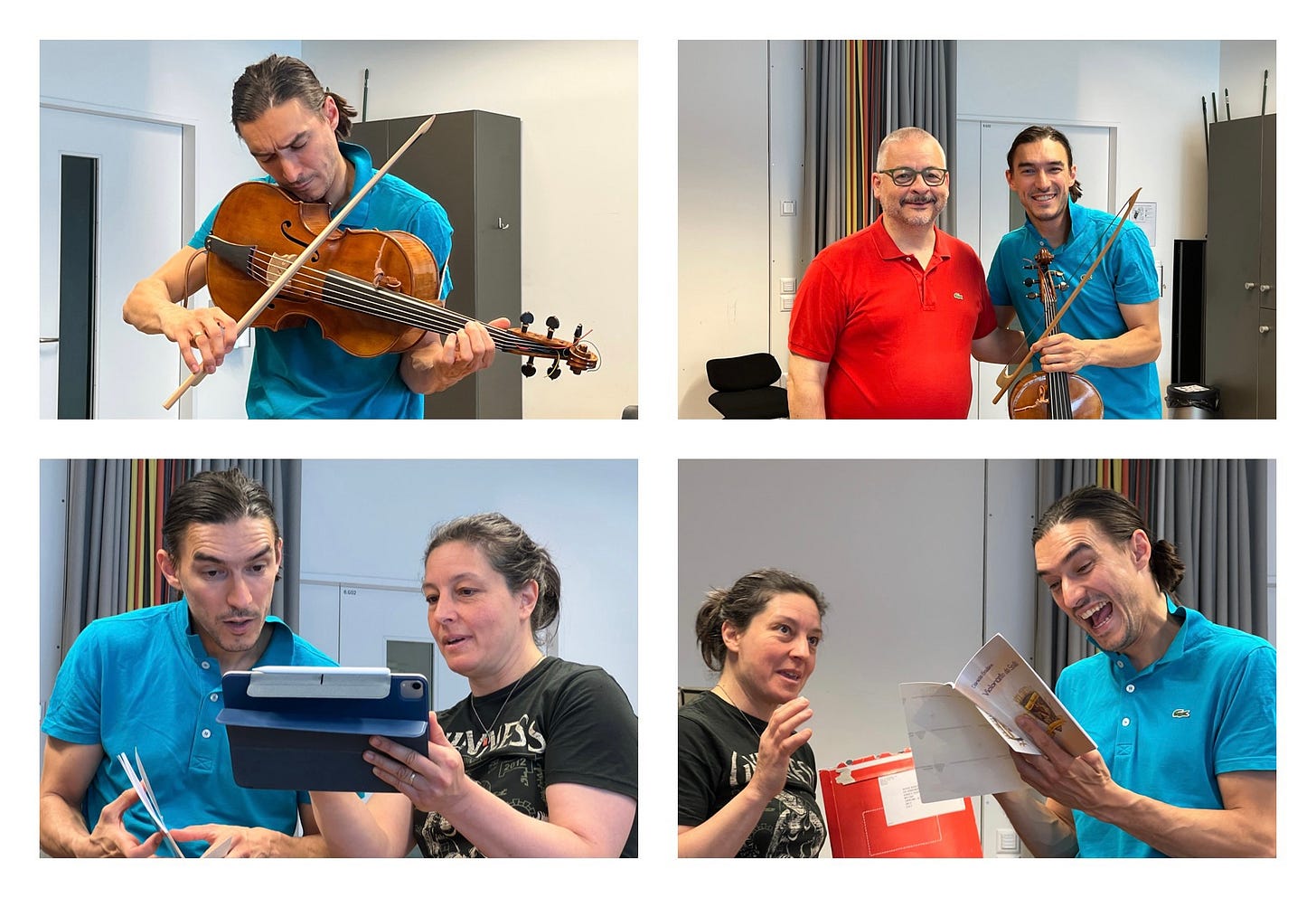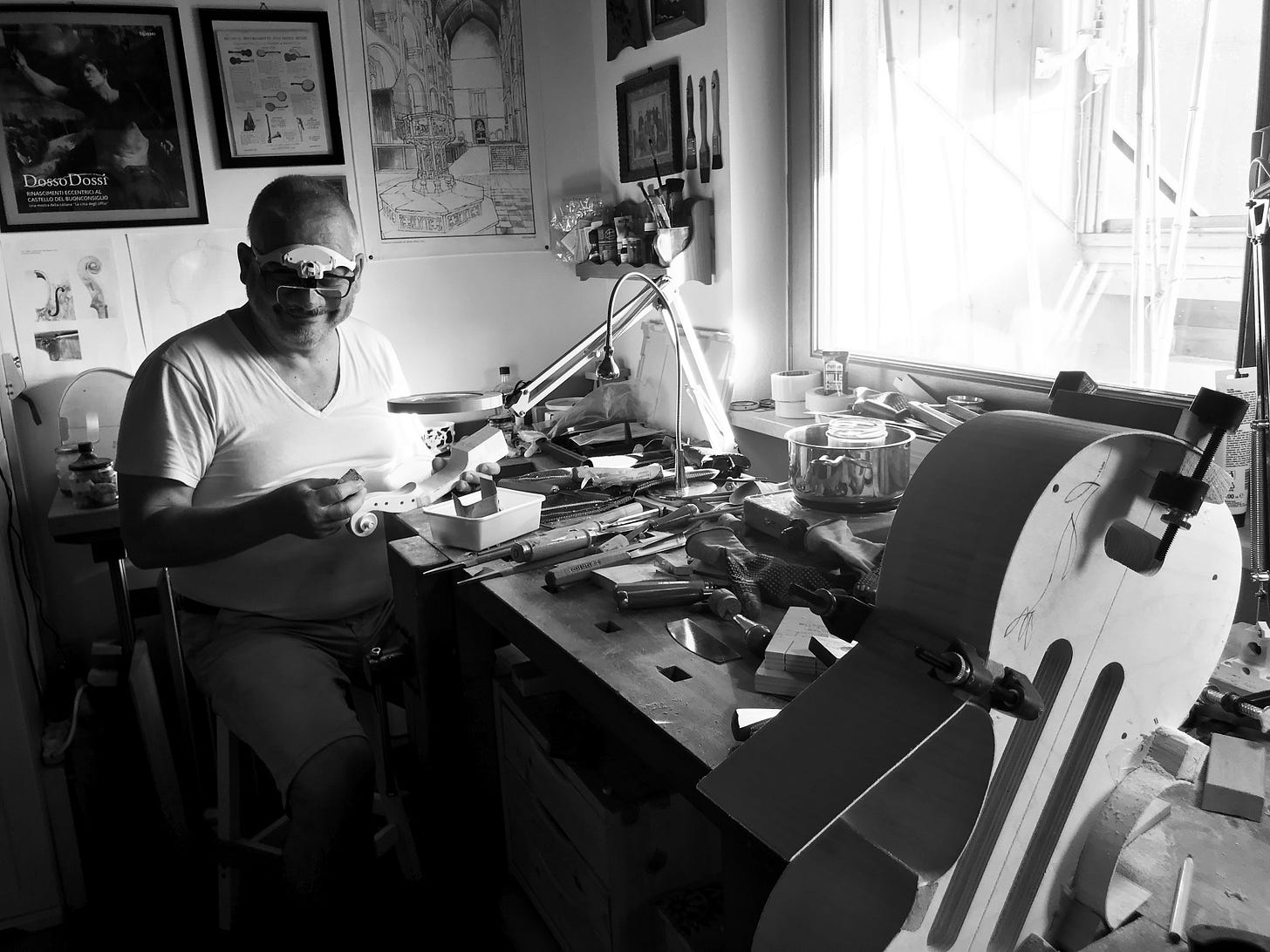An iconography from Upper Hungary
Right at the curtains of cello place and time
From a chat with Zsombor Nèmeth. While in the Museum of Fine Arts in Budapest,
he bumped into this outstanding epitaph.
Looks like a big viola and a cello. We’re not sure how deep are the ribs of the big viola. There is still one peg in it, and also, from the signs on the tops, they probably had fittings. Possible signs of very low positions of the bridge. This whole thing is remarkably big, so the angels are something like 100 cm high.
The viola is played with an overhand grip of the bow, the cello with an underhand grip.
This epitaph comes from Kisszekeres, Upper Hungary, before 1646. This means no wound strings in use, only pure gut. This is a period where traditional history tells us that the bass of the violin family was big, much bigger than today’s cello, and only after the invention of wound strings they could shorten it to “invent” the cello how it is today. Here we see a small cello, a bit smaller than it is today. I think this is a tenor cello. Tuned G2D3A3E4, with four gut strings. And the other instrument, the viola da braccio, looks proportioned with it, as long as an instrument tuned a fourth above should be, as the viola of today.
But when we consider the low position of the bridge, these two instruments could be tuned even lower than that. The viola could go as low as a tenor, one octave below the violin. If we measure the scale with the low bridge position, it could well be the double of a violin scale. And the cello could be tuned as today’s cello.
This is one of those cases that won’t go in any of our modern classifications. Before wound strings, in all the glory of baroque, and quite east and far from Italy, where the cello was born. Ops! Another “classification” that came in the way.
Upper Hungary was that part of Hungary that, during the wars between Augsburg and Ottomans, remained ruled by Augsburg. It strikes me how, as Zsombor quite correctly noticed, whenever we speak of cello history, string-making history or the history of Lutherie, three fields quite linked together, the double-headed black eagle of the Augsburg-Este comes out. No matter whether we’re in Saxony, Hungary, Venice, Piacenza, or Abruzzi.
Indeed there’s a lot to research still.
Further readings:
https://baroquebows.airenti.it/blog/what-kind-of-bow-did-antonio-vandini-play-with-1
News from da Spalla world
You may have noticed that Sergey Malov had disappeared from social. He was hacked, and all of his accounts were closed and deleted, leaving him without even the possibility to get in touch with the customer service. Now he’s back and is working hard to upload again the great content he had. Follow him on his new Instagram account @spallenmann_official
Updates from our workshop
Last week for us was marked by a road trip in Switzerland and the purchase of a new fabulous flute for Alessandro. A modern wooden flute with a dreamlike sound, powerful and colourful. Switzerland from the point of view of someone living in South Tyrol. Everything is “more” than home: cleaner, tidier, quieter, better kept, more expensive, and mountains are higher, steeper, quieter… I loved the mountains and landscape, but the cities look much better in pics than in reality because they have something unreal. Too well kept, you cannot realise how old the buildings are. They usually are around six centuries-old but seemed built last year. A bit like walking in Las Vegas Venice….
The big event of the week was our meeting with Sergey Malov. Well, he is precisely how you would expect. What you see from him on socials is not a built virtual persona. He is very nice and kind, much fun and a real virtuoso. Curious and brilliant. It was an absolute pleasure meeting him and his students!
Featured video of the week
Who says that mastering a Violoncello da Spalla is hard? Here is Toshihiko Amano with his student Kai, 13 years old, in his first week with a Violoncello da Spalla.










